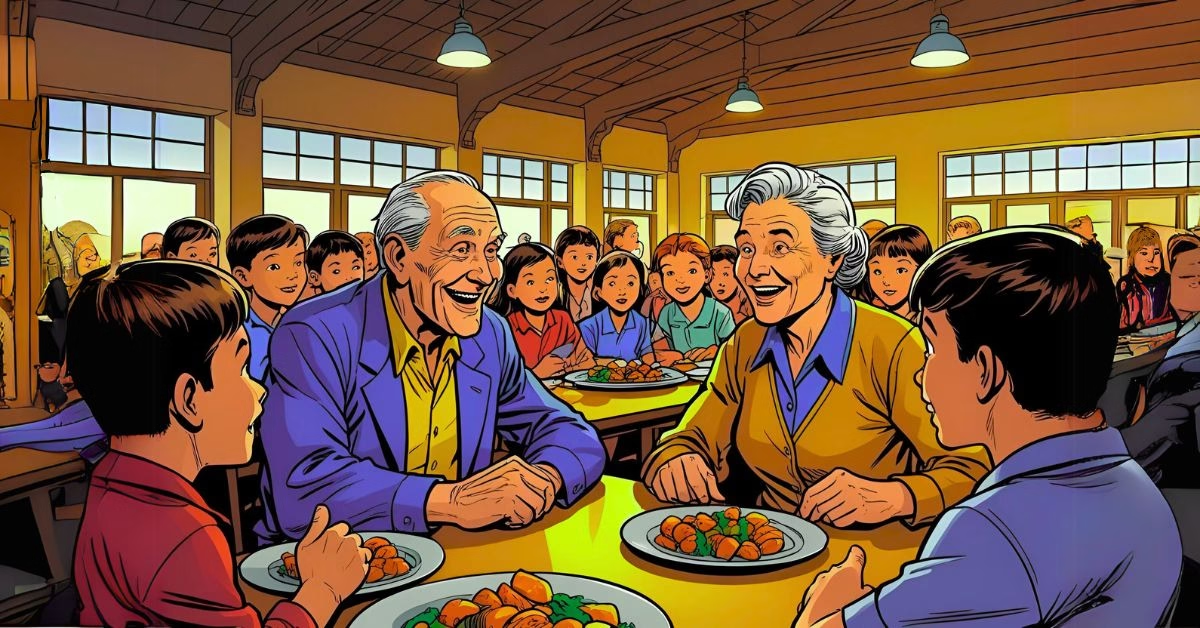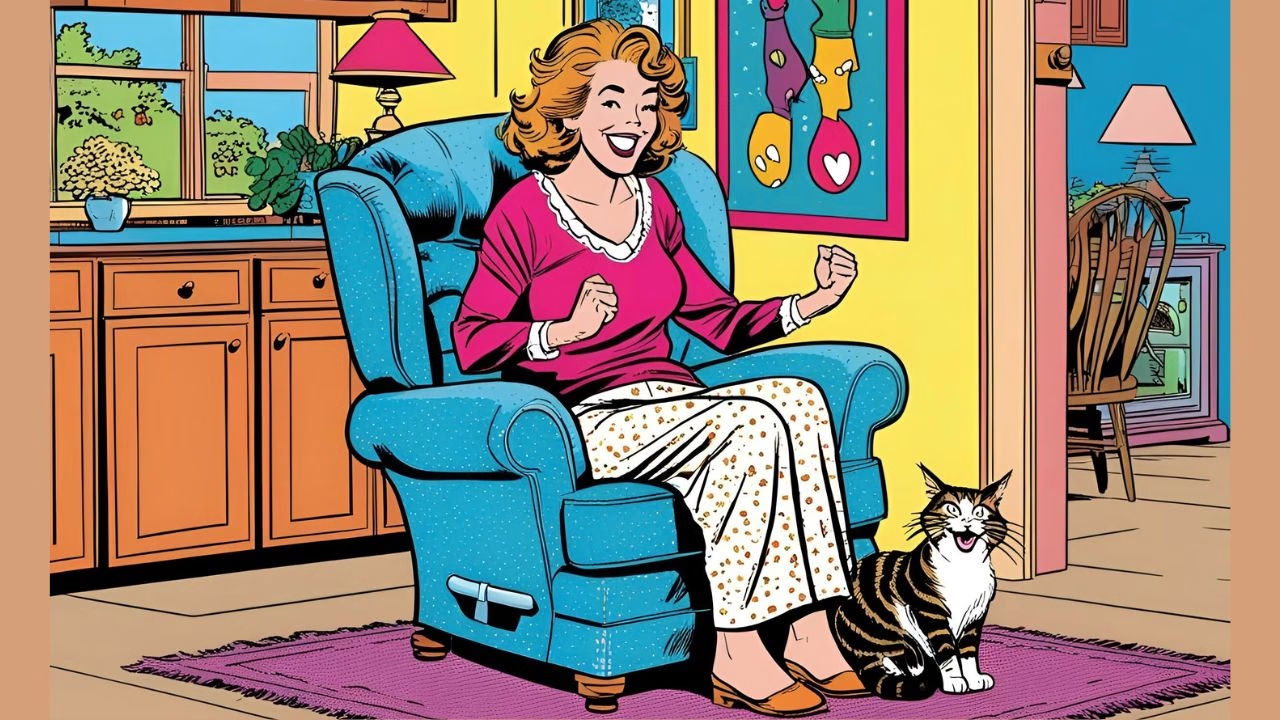How intergenerational relationships can mend the cracks in modern society.
🔞 Introduction: A Nation Divided by Age
Something is missing in our communities. You can feel it in the quiet homes where older people live alone for days without conversation. You can see it in the eyes of teenagers who feel adrift. Kids are overstimulated by screens but undernourished by real-life connections.
Two generations, both rich in wisdom and potential, are drifting further apart. And yet—what if the healing they each need could come from each other?
Across the UK, USA, Canada, Australia, and New Zealand, a growing number of children are struggling with trauma, neglect, or unstable home lives. At the same time, many of our elderly are battling isolation, often with no one nearby to offer companionship or care.
A quiet revolution is forming in response: intergenerational relationships.
These are programs and day centres that bring together the young and the old—not for novelty, but for deep, intentional relationships. Carefully designed activities help children build trust and social confidence while giving older adults renewed purpose and emotional connection.
The early results are deeply encouraging. And in a society that often feels fractured and fatigued, this might just be the fresh start we’ve been waiting for.
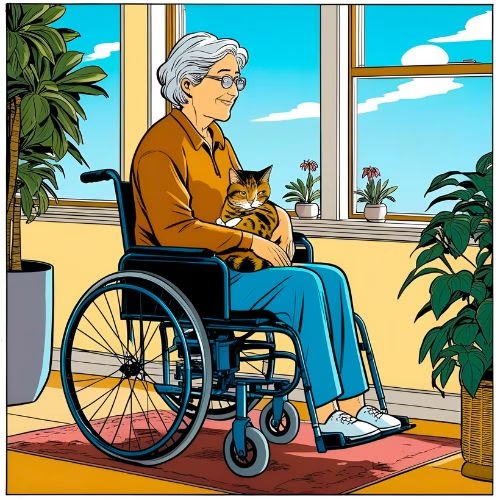
| 🌍 Country | 📊 Key Findings |
|---|---|
| 🇬🇧 United Kingdom | 7% (≈930,000 people) feel often or always lonely; 270,000 go a week with no contact |
| 🇺🇸 United States of America | 27% of older adults live alone; 43% report feeling lonely |
| 🇨🇦 Canada | 24% of seniors suffer chronic loneliness |
| 🇦🇺 Australia | 1 in 3 people aged 75+ experience weekly loneliness |
| 🇳🇿 New Zealand | 33% of those aged 65+ report feeling lonely (2023 Wellbeing Report) |
🧸 Section 2: The Hidden Wounds of Childhood Trauma
😞 Broken Starts, Broken Paths
While the elderly are often isolated and overlooked, many children are facing battles of their own—often in silence. In every corner of our nations, young people are navigating complex trauma from neglect, abuse, unstable homes, and social disconnection. For some, the fallout leads to behavioural problems, educational setbacks, and even criminality.
In the UK, research by the Ministry of Justice found that 41% of prisoners had experienced abuse or neglect in childhood, and 24% had spent time in care. The cost of unhealed trauma ripples outward—not just emotionally but economically and socially. These aren’t just statistics. They’re warning signs.
🔥 When Trauma Becomes Behaviour
Children who have never had stable, nurturing relationships may struggle to form them later. Many develop emotional defences that look like disobedience, aggression, or withdrawal. Others become easy targets for gangs, predators, or ideologies that promise power and belonging.
In too many cases, we don’t intervene until the child becomes “a problem” for the system. But by then, much damage has already been done.
🧩 Summary Table – Youth Trauma & Delinquency
| 🌍 Country | 🧠 Key Findings |
|---|---|
| 🇬🇧 United Kingdom | 41% of prisoners were abused/neglected; 24% spent time in care |
| 🇺🇸 United States | 78% of incarcerated youth report past trauma or neglect |
| 🇨🇦 Canada | 63% of youth in detention centres experienced childhood abuse or trauma |
| 🇦🇺 Australia | Over 50% of detained youth have experienced significant early-life trauma |
| 🇳🇿 New Zealand | 70% of youth offenders report family violence or neglect histories |
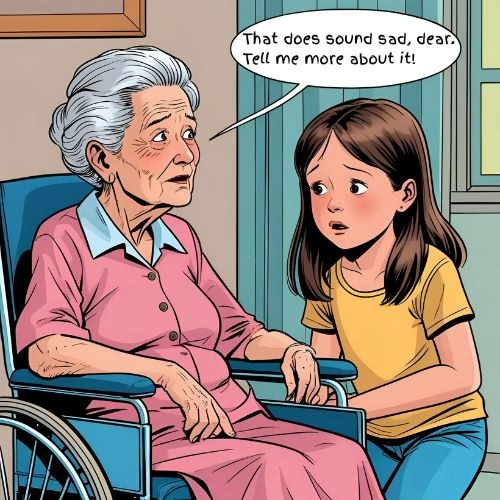
🫂 Why Intergenerational Relationships Could Be the Answer
This is where intergenerational models shine. Older adults can offer consistent, calm, and caring attention. Many of them have raised children, overcome hardship, and survived loss. They provide a kind of slow wisdom that is deeply stabilising for a child in turmoil.
In return, the children offer joy, laughter, and a sense of renewed purpose. It’s not charity—it’s exchange.
- In the United States, programs such as Generations United and One Generation have pioneered shared care models, where children and older adults participate in activities like reading sessions, music, or crafts. Some facilities report reduced behavioural issues among children and decreased medication use among elders.
- In Japan, nursing homes often share space with nurseries, encouraging daily visits. These regular cross-generational touchpoints improve mental stimulation for seniors and empathy in children.
- In the UK, pilot studies of intergenerational day centres have shown increased self-esteem, social skills, and positive mood in both groups, particularly when interaction is guided by trained staff. A pioneering care village where preschoolers and residents (many with dementia) engage in daily shared activities—boosting physical, emotional, and social wellbeing.
👉 Choirs, mocktails and “Glastonbaby”: welcome to the UK’s first intergenerational care home - UK & Australia – Pilot Clinical Research
A 10-week intergenerational program in Australia showed gains in self-worth, social connection, and cognitive engagement among seniors living in community settings.
👉 A 10‑week intergenerational program bringing together community‑living older adults and preschool children (INTERACTION): a pilot feasibility trial
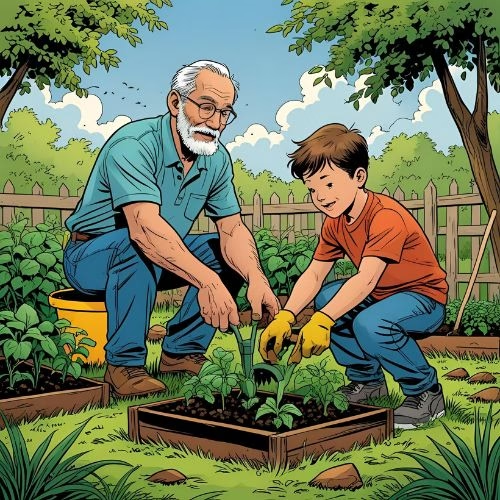
💰 Section 4: The Economic & Social Payoff
🏗️ Building Value Beyond the Bottom Line
When we talk about intergenerational relationships, it’s tempting to focus only on the emotional benefits. But the truth is — these connections offer a strong return on investment, too.
Loneliness among older adults is now considered as dangerous to health as smoking 15 cigarettes a day. The cost of health services from treating conditions worsened by isolation (like depression, anxiety, and heart disease) is enormous. Meanwhile, youth crime, school exclusion, and mental health crises also drain public funds and emergency services.
Intergenerational relationships can intervene early, naturally, and cheaply.
🧾 What the Numbers Say
- In the UK, the estimated cost of loneliness to public services is £1,700 per person per year among the over-65s.
- In the US, Medicare spends over $6.7 billion annually on social isolation-related conditions.
- Youth crime and incarceration cost the UK over £1.5 billion annually—much of it tied to preventable trauma and disconnection.
- Intergenerational programs can reduce these costs while boosting community well-being—particularly where shared space, staffing, and activities are involved.
🏡 Supporting the Sandwich Generation
There’s also relief for families in the “sandwich generation”—those caring for children and ageing parents at the same time. Shared community hubs that provide both childcare and elder support ease emotional and financial pressure, especially for working mums.
By reducing dependence on formal care and offering flexible support networks, these hubs empower families to function better, with less burnout and fewer breakdowns.
📈 More Than Just Savings
The payoff isn’t only about what we save—it’s about what we grow:
- 🧠 Mentally healthier elders, with sharper cognitive abilities and longer independence
- 👧 More resilient children, better prepared emotionally and socially for adult life
- 🏘️ Stronger communities where people of all ages feel needed and known
It’s not utopian. It’s just wise stewardship of human potential.
- Adopt-a-Gran Programs: Pair up children from local schools or youth groups with elderly residents for weekly chats, letter exchanges, or storytelling visits.
- Skills Swap Clubs: Older adults teach baking, mending, gardening, or even basic budgeting to young people — and learn tech tips or app hacks in return.
- Breaktime Buddies: Volunteers from retirement communities spend time in school playgrounds or lunch halls as trusted adults for kids who need extra support.
- Shared Community Gardens: A patch of soil becomes a shared mission and metaphor — slow growth, care, and fruitfulness across the generations.
- Faith-Filled Friendships: In churches, intergenerational homegroups or pastoral pairings can offer older congregants a renewed sense of purpose and young believers a living testimony of faith through hardship.
- Write a letter to a care home
- Ask a teacher or vicar if elderly volunteers might be welcome
- Invite an older neighbour for a cup of tea
- Share a social post about an elderly person’s wisdom or story
If just a few families and older adults connect, that’s enough to begin healing a gap that has grown for decades.
✝️ Section 6: Remembering God’s Way
Throughout Scripture, we see the pattern of generational connection as central to God’s design. Elders teach and guide. Children listen and grow. Families live together, not just under one roof, but interwoven in purpose.
Yet, over recent decades, something else crept in — a deliberate divide was driven between the young and the old.
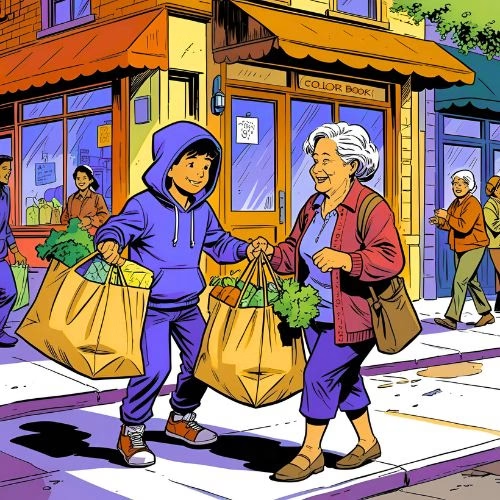
It didn’t stop there. The homemaker role was dismantled, sold to us as “liberation,” when, in fact, it stripped families of their anchors. Suddenly, no one was home for the children after school. No one was available to care for ageing parents. No one was truly present — and both the young and the old paid the price.
This was not progress. This was programming.
But it is not God’s way.
💖 Intergenerational Hope: Reconnecting to a Better Pattern
We don’t need a government mandate to care. We need hearts willing to notice:
- the elderly neighbour with no visitors,
- the teenager everyone avoids,
- the child walking home alone.
For decades, society was steered to believe that the young were dangerous and the old were a burden. We were encouraged to hand our families over to institutions — to fear the next generation and forget the last.
But that was never the way.
So here’s a gentle challenge:
- If you’re older, your life experience is gold. Could you share it with a young person nearby?
- When you’re younger, your energy and presence could brighten someone’s final years.
- Are you raising children? Can you invite an older friend into their world?
- For those who are isolated, know that God has not forgotten you — and neither have we.
Start with one act. One invite. One memory shared across generations. From there, let it grow.
Because a healed nation won’t come through policy.
It will come through people.
And people, reunited in purpose, can rebuild anything.
For more posts on connecting with others, visit the connections section of our website.


